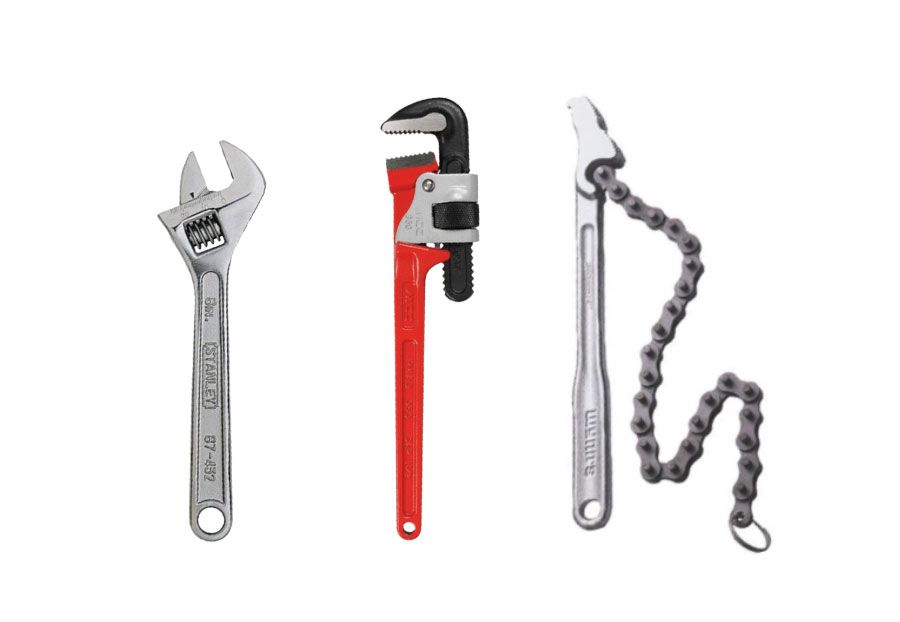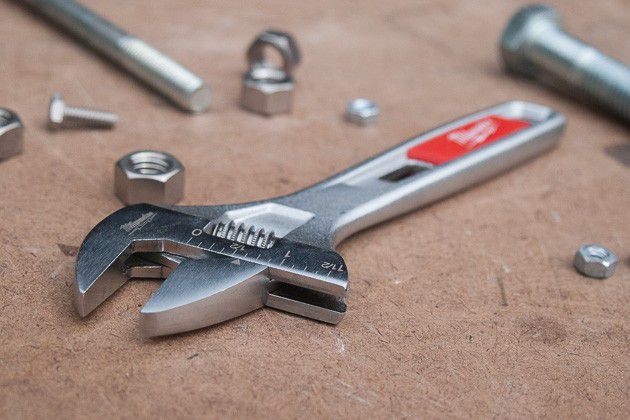How to make the most of a wrench?
Have you ever made the most of your wrench? Why are wrenches so versatile, tips for effective use, distinguishing common types of wrenches on the market and how to choose the most versatile wrench for every need.
Contents
Why is a wrench indispensable in a toolbox?
If you ask a craftsman what is an indispensable tool for them, the wrench will definitely be the most mentioned answer. The use of a wrench is outstanding because of its ability to adjust the jaw size, helping you to manipulate a series of screws and bolts of different sizes, something that traditional wrenches are often limited to.

Many people wonder why the wrench is so versatile: Its strongest point lies in the jaw that can change size with just a turn of the knob. Thanks to that, the wrench is suitable for everything from machine repair, furniture assembly, to water pipe maintenance or even in professional auto workshops. For example, when you need to tighten the screws of faucets, disassemble computer components or adjust sofas.
Compared to a regular wrench, how flexible is a wrench? The usefulness of a wrench is also evident when you have to move frequently and cannot carry many tools. With just one, you can easily operate on all common standard screws.
See more:As a new user, have you distinguished between a wrench and a pliers?
What are the common types of wrenches on the market today?
If you need a multi-purpose wrench for home or car repair, the TOP Kogyo MT-2025 model stands out with its quick-adjust design (from 38 to 47 mm), light weight (380 g) and torque up to 58 N·m, suitable for everyday work.
When working in narrow spaces such as electrical boxes, door frames or locks, a slim wrench is the ideal solution. For example, the TOP Kogyo HT-32 Slim-Jaw Wrench with a slim jaw of only 65 mm and a fairly large torque of 137.5 N·m helps you easily access hard-to-reach tightening points.
For projects requiring high strength and strong torque, the SATA Adjustable Wrenches is a very suitable choice, for both mechanical engineers and professional maintenance workers. A typical example is the STANLEY 97-797 model, 24 inches long, the body is made of high quality, super durable chrome-vanadium steel.
Tips for using and maintaining wrenches
Place the wrench in the right direction, tighten it comfortably: A small tip to help maximize the effectiveness of the wrench: place the fixed jaw (thick jaw) on the side of the main force (pulling towards you), the movable jaw on the other side. This distributes the force evenly, reducing the risk of slipping and damaging the screw or wrench.

Always adjust the jaw to fit the bolt: Don't forget to adjust the wrench jaw to fit the screw head before tightening, if left loose, it will easily wear out the screw edge or misalign the jaw teeth, reducing the life of the wrench and screw. This is a simple tip but helps increase the effectiveness of the wrench in all practical situations.
See more content about Wrench:What is a wrench? What is it used for?
Conclude:
Regular maintenance, cleaning, and lubrication: After a period of use, dirt and metal shavings can jam the knob or loosen the jaw. Clean and lubricate regularly to maintain the wrench's smooth operation as new, and check the jaw's tightness to be ready for the next use.
With the ability to adjust flexibly, use a variety of things from home to industry, and when purchased from reputable brands such as TOP Kogyo, SATA or Stanley, wrenches are truly one of the most basic but valuable tools that any technician or DIY user needs. In addition to saving time and money when replacing many types of wrenches, wrenches also make repair and assembly work much simpler and more efficient. Therefore, investing in a high-quality wrench from EMIN is a sure way to keep you ready for any situation.
